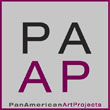« Features
Altermodern?

Charles Avery, Untitled (World), 2009, Pencil, gouache, ink, acrylic, paper, mounted on canvas, framed with plexiglas, 88.5” x 130” x 3.9”, Courtesy the artist. Collection Hamilton Corporate Finance Limited, Photo: John Jones, London
By Ernesto Menéndez-Conde
Altermodern is the new term the French curator Nicolas Bourriaud proposed for understanding our present. The recent Tate Triennial (London, February-April, 2009) was devoted to consecrating, or at least putting this concept into circulation. In the introduction to the catalogue Nicolas Bourriaud wrote:
“The terms ‘MODERN,’ ‘POSTMODERN,’ ‘ALTERMODERN’ do not define styles (save as ways of thinking), but here represent tools allowing us to attribute times-scales to cultural eras.” (16)
Therefore, our contemporary culture would be, according to Bourriaud, that of the altermodern. The term attempts to “delimit the void after the Postmodern.” (12) The words for the catalogue, and even the whole show, are a sort of avant-garde manifesto, in which the definition of altermodern is displayed, demonstrated through the artworks and other supplementary texts and discussions. Altermodern would be a sort of constellation, in which art “needs to reinvent itself in a planetary scale.”(12)
At the risk of simplifying Bourriaud’s description of the present a little bit, his viewpoints could be summarized as follow: 1) In our cultural era, art is heterotopic. It goes beyond nationalities, immersed in global dialogues and creolization. contemporary art is essentially a hybrid. It is related to the experiences of migration, displacement, exile, and traveling to the point that “trajectories become forms.” 2) As a result, there is a fragmentation of the work of art, whose unity consists in being a network, a collective creation, or a process that generates forms. 3) Contemporary art assumes heterochrony. That means, it wanders through history, unable to understand time – as Modernity did – as a lineal progression, or conceive of it as an exhaustion, in which history and metanarratives come to an end (as it was perceived from the postmodern perspective). In the altermodern, there are multiple experiences of time (Bourriaud mentions anachronism, delay, anticipation, and the immediate) coexisting in a sort of web, articulating meanings with the purpose of revealing the present. 4) Contemporary art is a displacement of signs, in which materials are interconnected, developing a chain of references that are dialoguing with each other in order to produce a narrative, and in which storytelling plays a main role. 5) Altermodern is marked by exodus, by deterritorialization, and the nomadic. Staying away from traditions, the new art turns to a strategic universalism, creating a language which goes beyond nationalisms, or regionalisms.
The Tate Triennial illustrated all these points through the display of artworks and debates devoted to the postcolonial world, exodus, and travel. The series of pictures shown by Rachel Harrison are a good example of these altermodern practices. In Voyage of the Beagle, Harrison worked in a series of portraits that starts and ends with images of menhirs. The pictures are suggesting the idea of a circular journey (Kelsey, 2009). It is also a planetary voyage, a trajectory through signs, and history – including allusions to the future, as depicted by science fiction – since the portraits are references to cultural icons taken from all over the world, from mass-media images to avant-garde sculpture, from classic statues to African masks. The title Voyage of the Beagle was taken from the memoirs of Charles Darwin’s expeditions to the coasts and islands of South America. The title proposes an analogy between today’s global world (which the artist traveled through the images) and archipelagos. That fits Bourriaud’s intentions perfectly. In fact, he also uses the archipelago as a metaphor for the present:
“Here we are back with the image of the archipelago: instead of aiming at a kind of summation, altermodernism sees itself as a constellation of ideas linked by the emerging and ultimately irresistible will to create a form of modernism for the twenty-first century.”(12)
However, Voyage of the Beagle could be seen as well as an example of the postmodern aesthetic. The travel through space, signs, and history is related to postmodern strategies of parody, pastiche, and transvestism. In one of Harrison’s pictures, what seems to be a Japanese mask evokes Elvis Presley’s face; in another one, Gertrude Stein is portrayed in the manner of Buddha representations. It is hard to delimit heterotopy and heterochrony from postmodern artistic appropriation. All the references are aiming to produce a carnivalesque effect. As in carnivals, the idea of the mask, zoomorphism, wigs, disguises, corny crowns, and kitsch figurines can be found everywhere in Voyage of the Beagle. The two levels of reading enunciated by Charles Jencks – the eclecticism, and the use of kitsch with artistic intentions – which typify the postmodern aesthetic, are quite notorious in Harrison’s pictures.
Rather than evidence of an altermodern stage, Voyage of the Beagle could suggest that the theoretical hypothesis launched by the Tate Triennial lacks further development. It can be argued that, as Bourriaud says, neither postmodern nor altermodern are styles, so the same artwork features could be interpreted in one way or the other. However, after reading the catalogue, the difference between what Bourriaud sees as a “time scale of a cultural era” and the postmodern remains unclear, and it even seems to be supported by aspects that were already noticed by many theoreticians of the seventies and eighties.
The concept of art as heterotopia, for instance, was already circulating by the late eighties. In his book Hybrid Cultures (1989), Néstor García Canclini noticed that Latin American modernity was not only about national borders, ethnicities, and class distinctions. Latin American modernity was also an experience in which the sociocultural frontiers were erased, mixed, and interwoven, producing what Canclini called hybrid cultures. Postmodernism was not just a nostalgic complaint about the death of almost everything, but it was also a moment of travel and displacement. In his essay “Dall’utopia all’eterotopia” (1989) Gianni Vattimo used the word heterotopia in order to describe a universal and communitarian culture.1
When Bourriaud talks about the generalization of the hypertext (one sign directs us to a second, then a third, creating a chain of mutually interconnected forms), he seems to describe what was one of the main topics of postmodernism, which was strongly associated with intertextuality and the use of old signs with a new logic (Foster, 1984).
Postmodernim is over. Postmodernism is dead. Since 1989, if not earlier, some scholars and art critics have been arguing about the need for going beyond the term, not to mention the ones who, from the very beginning, remained skeptical about the word. There is no doubt that the debate about postmodernism was already fading away during the early nineties. Still, attempts to define this concept not only produced a significant amount of seminal texts about the emergence of a new sensibility and a new system of cultural production, but also, in a broader sense, they succeeded in creating a distinction between a previous past (modernism), and a new cultural moment (postmodernism). As Fredric Jameson has observed, from aesthetics to economics, from social relations to science, fashion and ideology, postmodernism has affected every single aspect of society (1999). Is this postmodernism, understood as a cultural dominant, actually over? Can we talk about a qualitatively different cultural stage? If so – and this is already arguable even though it seems globalization is generating a new set of complexities – how can we define this cultural present?
Globalization is an unprecedented phenomenon, and Bourriaud is trying to explore how it has transformed cultural production. This was the main – provocative and speculative – challenge of the show at the Tate Triennial. However, in my opinion, as a theoretical hypothesis, the description of the new term fails to establish a differentiation from the postmodern.
What if, by now, the death of postmodernism is, paradoxically, one of the many death certificates issued by the postmodern? Néstor García Canclini is cautious about the idea of labeling the new cultural moment with just a single word. Perhaps the new cultural developments cannot be subsumed in a system yet, at least not without falling back into postmodernism’s webs. In the end, we are not that far from postmodernism, and perhaps the new cultural era is still about to come, showing new symptoms, or new signs, but without being born yet, still germinating in its mother’s womb.
Note
1. Author refers to: Vattimo, Gianni. “Dall’utopia all’eterotopia.” Trans. into Spanish. Desiderio Navarro. Criterios 30 [Havana] Jul-Dec, 1991: 121.
Works Cited
Bourriaud, Nicolas. “Altermodern.” Altermodern, Tate Triennal. London: Tate Publishing, 2009.
Kelsey, John. “Rachel Harrison.” Altermodern, Tate Triennial London: Tate Publishing, 2009: 114.
Foster, Hal. “Re:Post.” Art after Modernism: Rethinking Representation. Ed. Brian Wallis. New York: The New Museum of Contemporary Art, 1984.
Jameson, Fredric. Postmodernism, or The Cultural Logic of Late Capitalism. Durham, North Carolina: Duke University Press, 1999.
García Canclini, Néstor. “La globalización: ¿Productora de Culturas Híbridas?” <http://www.hist.puc.cl/iaspm/pdf/Garciacanclini.pdf>.
Ernesto Menéndez-Conde is finishing a PhD in Romance Languages at Duke University. He has published in magazines in Havana, Spain and New York. He has also collaborated with Marlborough Gallery and Sotheby’s in New York.


































